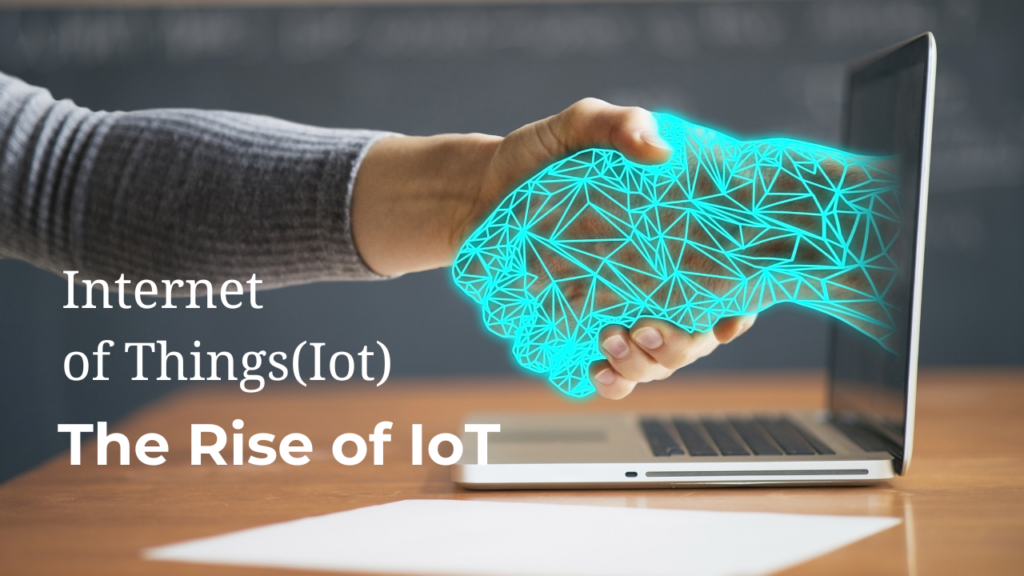Table of Contents

Introduction:
the Internet of Things (IoT) has become a transformative force, weaving a web of connectivity through everyday devices. From smart thermostats to wearable fitness trackers, the convenience offered by IoT is undeniable. However, this interconnected landscape also brings forth a myriad of security challenges that demand attention. In this blog post, we’ll explore the symbiotic relationship between the Internet of Things and security, unraveling the complexities and offering insights into how individuals and organizations can navigate this landscape safely.
The Rise of IoT (Internet of Things) and Its Security Implications:
The Internet of Things refers to the network of interconnected devices embedded with sensors, software, and other technologies that enable them to collect and exchange data. While the proliferation of IoT devices has ushered in unprecedented convenience and efficiency, it has also opened the door to a host of security concerns. One major challenge stems from the sheer volume and diversity of devices, each representing a potential entry point for cyber threats.
Security Challenges in the IoT Landscape:
1. Vulnerabilities and Exploits:
- With many IoT devices operating on outdated or limited firmware, vulnerabilities can be exploited by cybercriminals to gain unauthorized access or launch attacks.
2. Inadequate Authentication and Authorization:
- Weak authentication mechanisms and insufficient authorization protocols in IoT devices can expose sensitive data to unauthorized users.
3. Data Privacy Concerns:
- The vast amount of data generated by IoT devices raises concerns about data privacy. Unauthorized access to personal information poses a significant risk.
4. Lack of Standardization:
- The absence of standardized security measures across various IoT devices complicates efforts to create universal cybersecurity protocols, making it challenging to establish a cohesive defense.
Addressing IoT Security:
1. Robust Authentication and Encryption:
- Implementing strong authentication methods and encryption protocols can fortify IoT devices against unauthorized access and data breaches.
2. Regular Software Updates:
- Ensuring that IoT devices receive regular software updates is crucial for patching vulnerabilities and enhancing overall security.
3. Network Segmentation:
- Segmenting IoT devices from critical network components helps contain potential breaches and limits the impact of a compromised device.
4. Privacy by Design:
- Integrating privacy considerations into the design and development of IoT devices ensures that user data is handled responsibly from the outset.
The Future of IoT Security:
the trajectory of IoT (Internet of Things) security unfolds with both challenges and opportunities. The continuous proliferation of IoT devices in our homes, businesses, and daily lives demands a forward-thinking approach to cybersecurity. Here’s a detailed exploration of the factors shaping the future of IoT security:
1. Increased Connectivity and Complexity:
- Challenge: With the increasing number of IoT devices, the complexity of managing their security grows exponentially. Each device represents a potential entry point for cyber threats.
- Opportunity: The future of IoT security involves developing sophisticated solutions capable of managing the intricate web of interconnected devices. Artificial intelligence (AI) and machine learning (ML) will play pivotal roles in identifying and responding to evolving threats.
2. Integration of Blockchain Technology:
- Challenge: Traditional centralized systems are susceptible to single points of failure and hacking attempts.
- Opportunity: Blockchain, with its decentralized and immutable nature, is poised to revolutionize IoT security. It ensures transparent and secure transactions, making it challenging for malicious actors to tamper with data.
3. Edge Computing and IoT Security:
- Challenge: Centralized cloud computing introduces latency and potential vulnerabilities as data travels between devices and the cloud.
- Opportunity: Edge computing, which processes data closer to the source (on the device or at the edge of the network), minimizes latency and reduces the attack surface. This paradigm shift enhances the overall security of IoT ecosystems.
4. Standardization and Regulatory Frameworks:
- Challenge: The lack of universal standards makes it difficult to implement consistent security measures across diverse IoT devices.
- Opportunity: The future involves the development and implementation of standardized security protocols for IoT. Regulatory frameworks will likely emerge to establish baseline security requirements, fostering a more secure and predictable IoT environment.
5. AI-Driven Security Solutions:
- Challenge: Traditional security approaches struggle to keep pace with the dynamic nature of cyber threats targeting IoT ecosystems.
- Opportunity: AI-driven security solutions can analyze vast amounts of data in real time, detect anomalies, and respond to emerging threats autonomously. Machine learning algorithms can adapt and evolve, providing a proactive defense against sophisticated attacks.
6. Quantum Computing and Its Implications:
- Challenge: The advent of quantum computing poses a potential threat to current encryption methods, which form the backbone of IoT (Internet of Things) security.
- Opportunity: The future may witness the development of quantum-resistant cryptographic algorithms to safeguard IoT devices against the anticipated advancements in quantum computing.
7. Privacy by Design Principles:
- Challenge: Privacy concerns arise as IoT devices collect and transmit vast amounts of personal data.
- Opportunity: Integrating privacy by design principles ensures that user privacy is considered from the inception of IoT device development. Implementing anonymization techniques and providing users with control over their data will be key focal points.
8. Collaborative Cybersecurity Ecosystem:
- Challenge: The interconnected nature of IoT requires collaboration among stakeholders to address security vulnerabilities comprehensively.
- Opportunity: A collaborative cybersecurity ecosystem involves industry players, governments, researchers, and users working together to share threat intelligence, best practices, and advancements in security measures.
Conclusion:
the interconnected landscape of the Internet of Things, security is not a luxury but a necessity. By understanding the challenges posed by IoT (Internet of Things) devices and implementing proactive security measures, we can strike a balance between innovation and protection. As we embark on this journey of connectivity, let’s ensure that our IoT-driven future prioritizes the safety and security of individuals and organizations alike.
Visit the main page to read more and to contact us please visit SGK








